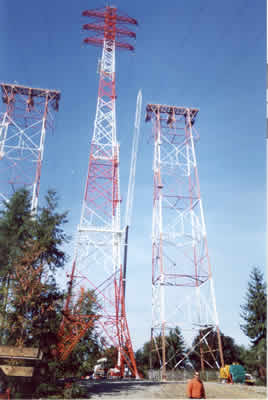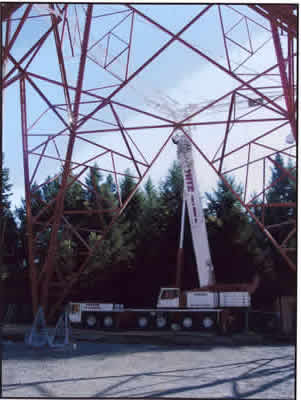December 2006 - “Cranes are our tools—people are our most valuable resource,” says Gary Hite, President of Hite Crane and Rigging of Spokane, Washington state. “That’s why safety and health are a vital part of our organization.” Hite’s safety plan requires his company’s crane operators to become CCO certified. “Training and certification is what has kept our company’s industrial insurance incident rating low,” says Hite, “and has instilled craftsmanship and pride within our workforce.”
Hite, a long time supporter of crane operator certification, sets a strong example for his employees. Not only is he a CCO-certified crane operator, he is also a CCO-accredited practical examiner for fixed cab and swing cab telescopic cranes, as well as lattice boom cranes. Recently he added overhead crane accreditation to the list.

“Our work includes pre-cast concrete, steel erection, pile driving, industrial machinery and bridge building operations,” adds Hite. “Often we perform work at industrial hydroelectric projects where we have found the CCO overhead certification program invaluable. There’s no question that a well-trained certified workforce helps lower our risk factors.”
Hite Crane & Rigging was founded by Everett Hite 37 years ago. In the early years, his wife, Bobbie Hite, took care of the books while Everett bid the work. “We started with three old 22B 25 ton Bucyrus Erie Cranes,” explains Gary. “I had just finished college as a structural engineer. I helped operate the cranes and performed maintenance evenings and weekends.” Hite’s father retired in 1976, when Gary took over operations.

Today the company’s fleet has grown to 24 cranes, including carrydecks, rough terrain, conventional lattice boom and hydraulic truck cranes ranging from 8 to 440 ton capacity. Heavy hauling service is also provided with up to 200 ton capacity. Hite Crane and Rigging, with over 70 employees, regularly provides lifting and rigging services in Washington, Idaho, Oregon, and Montana, as well as Canada.
Recent work included relocation of power lines at Tacoma, Washington’s Narrows Bridge project. The power line relocation included work on the longest single span of over a mile of power line in the United States. “The operation required two of our largest cranes,” said Hite. “We placed our 300 and 440 ton Demags on opposite sides of the Puget Sound Narrows. The project required 350 feet of luffing jib in each crane.” The job, Hite explained, was difficult, and required highly skilled crane operators. “It’s at times like these that a good safety plan, training and CCO certified crane operators in the seat really pay off—and help me rest a little easier at night!”